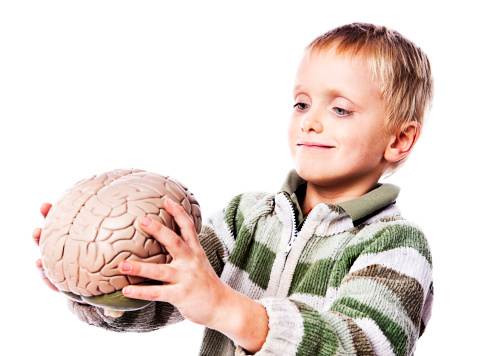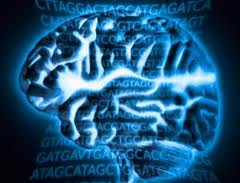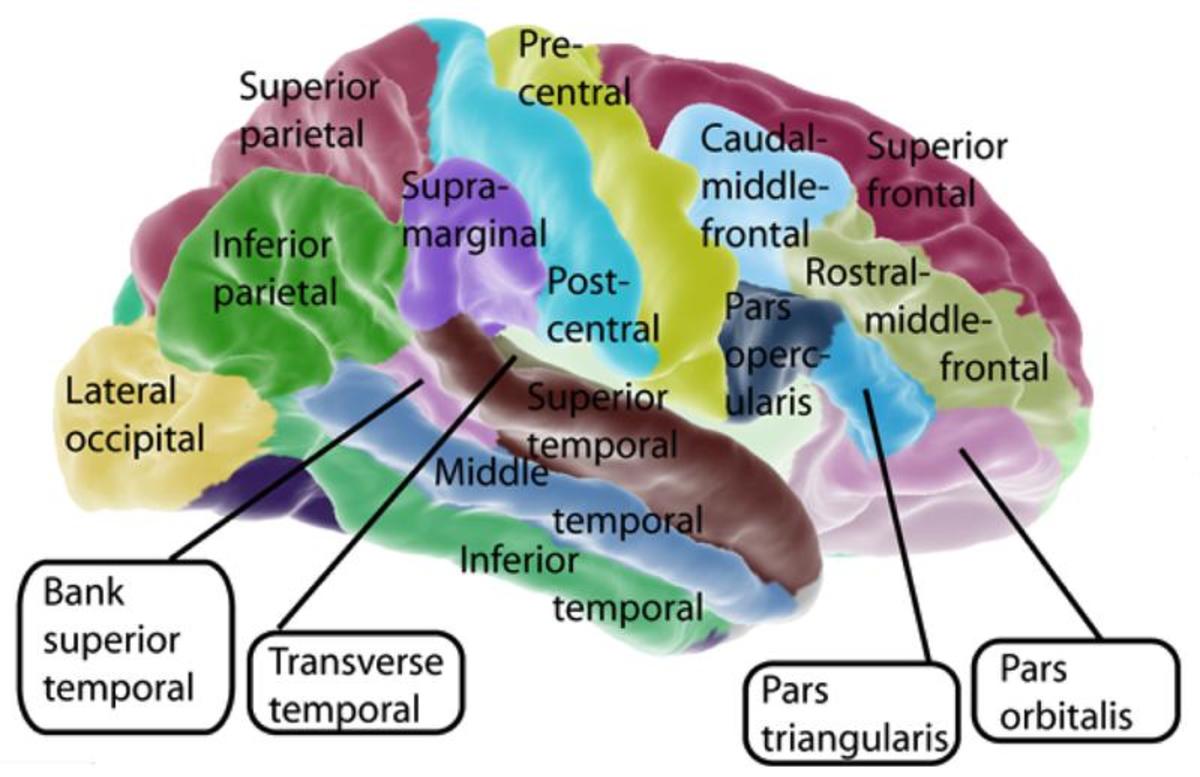Progression of Intelligence, or progression of the concept of Intelligence?

The Intelligence or Intelligence behavior is the “whole or global capacity of a subject to execute finalized actions, to think rationally and to interact with the environment in an efficient way”. “It is global because it characterizes the entire behavior of a subject; it constitutes a complex because it is composed by a series of independent and qualitatively distinguishable cognitive abilities.“

Genetics of Intelligence
Studies on monozygotic twins grown in the different families showed an intelligent level more similar than dizygotic twins grown in the same families. The genetic bag is an important factor to determine the Intelligence. There are proves that the early learning can modify the final level of the intellectual capacity. So, this last does not have to be considered as the sum of a genetic component and of an environmental one, but as the product of these. Furthermore, all the experts in psychometric concluded that the success achievement is regulated by different factors from those purely intellective, as the learning speed, the interest, the constancy and the motivation; these are variables in relation to the subjects and indirectly valuable through Intelligence tests.
About the genetic mechanisms involved in the Intelligence heredity, Lehrke proposed that genes codifying for the Intelligence are located on chromosome X, on the evidence of a greater number of males with mind delayed, on the different IQ distribution between males and females and on the common heredity of the mind delayed following an X linked mechanism. In the last years this idea has had new confirmation by large studies conducted on families with an X linked disorder whose only manifestation was an unspecific mind delayed. These works suggested that males are predisposed to carry aberrant or advantageous genes localized on the single X chromosome, while the females get advantage from the mosaic offered by the two X chromosomes. Turner refers to the genealogic tree of some subjects too; their superior Intelligence is inherited through an X linked mechanism. Other studies will confirm the validity of these observations and determine their contribution to the understanding of what would be a polygenetic heredity of the intellective characteristics.
Psychological theories of the Intelligence
About the psychological theories inherent the Intelligence, many have been proposed. One of them is known as “two factors theory” of Spearman, which saw that different tests of cognitive ability were positively correlated, suggesting the existence of a general factor (g) that operates in all performances. Nevertheless, none of those correlations were total, so he postulated that each test measures not only this general ability (commonly identified with the Intelligence), but one or more subsidiary factors too, specific for each particular test (factors s).
A second theory, known as “multifactorial theory of Thurstone”, speculates that the Intelligence consists in a certain number of primary mind abilities such us the memory, verbal, and arithmetical abilities, visual-spatial and solving-problems capacities, all more or less equivalent. Although these primary abilities are correlated, they are not subordinated to any general abilities.
A third theory, by Alexander, recalls the Spearman idea of the existence of a factor g, but it states that this factor alone does not explain the correlation between the tests.
Eysenck asserts that the Intelligence exists in three forms: biological (the genetic component), social (genetic component development associated to the interpersonal relations) and a certain number of specific abilities that can be measured through psychometric tests. Important in this theory is the emphasis given to the general genetic factor and to the special and hereditary capacities, all modifiable from the environment.
The most important elaboration of the multifactorial theory of the Intelligence is the Gardner one, an educational psychologist. He distinguishes six categories of superior cerebral functions: linguistic (that includes all the language functions); musical (that comprises the composition and the execution); logical-mathematical (the ideas and the work of mathematics); spatial (it contain the artistic talent and the visual impressions creation); kinesthetic (it embraces the dance and the sportive attitudes); personal (the awareness of the self and of the other in the social relationships). Gardner considers each of these categories as an intellective function, as the ability to solve problems in a specific field and to be creative. Naturally, the full develop of these abstract entities is influenced by the environment. The following argumentations are offered as support of these intellective faculties separation: 1) each of them can develop at an exceptionally high level in some subjects (virtuosity or geniality); 2) each can be “destroyed or spared in an isolated way” as consequence of lesions in some nervous system portions; 3) in some subject, as in the prodigious children, it is evident a special competence in one of these abilities; 4) in subjects mind delayed, one of these abilities can be spared (idiot savant).
For what concern the way with which the Intelligence develops, the most known theory is that of Piaget. Children traverse different learning steps linked to the age:
1. First step sensorial-motor from 0 to 2 years old;
2. Second step of the pre-conceptual thought from 2 to 4 years old;
3. Step of intuitive thought from 4 to 7 years old;
4. Step with concrete “operations” (conceptualization) from 7 to 11 years old;
5. Step with “formal operations” (logical and abstract thought) from 11 years old.
This theory implies that the logical thinking ability, which develops with ordinate steps, would be codified by genes. The theory was criticized for the absence of a quantitative confirms that could derive from studies upon a large number of subjects. Besides, it does not keep in consideration the special abilities of each subject, which do not develop and reach their highest expressions in the same time the general intellectual capacities do.
Neurology
In neurology, it would be possible to verify some of the numerous theories on the Intelligence and determine the anatomical substrate. Diffuse lesions can compromise the factor g of the Intelligence in proportion to the interested brain mass (principle of the “mass action” of Lashley). Actually, Chapman and Wolff theorize the existence of a correlation between the volume of tissue lost and the general deficit of the cerebral functions. Tomlinson and coll., which have studied the effects of the vascular lesions in the brain of old subjects, theorize that lesions greater than 50 ml of tissue cause a general reduction of the performances, mainly the rapidity and the ability to solve problems. Piercy found positive correlations between the loss of determinate functions and lesions of particular regions of the right and left cerebral hemispheres.
The Authors, on the base of their personal experiences and other evidences provided by neurological studies, believe that the Intelligence is a complex function (“Gestalt”) composed by primary multiple abilities, each of which seems to be hereditary and to have a different anatomical localization, not well defined yet.
Adams and coll. do not share the Thurstone and Gardner theory, which asserts that these specific abilities have to be classified in the same way. Adams and coll. attribute a greater importance to some of these abilities (linguistic ability and mathematical). Memory and the learning ability constitute cognitive entities with their own anatomical localization. Relationships of some of these special abilities are analyzed deeply by Luria. Neurological data do not exclude the possibility of a factor g, or a factor expressed in the thought and in the abstract reasoning, and operative only if the connections between the frontal lobe and the other portions of the brain are healthy. The attention, impulses and motivations are important psychological attributes, and the anatomy of which has yet to be identified.

Intelligence development
Even if the Intelligence is modifiable through the exercise, the practice and the scholarship, it is mainly a natural done. From intelligent parents born intelligent children and vice versa; all seem not reduced to a simple question of environment and learning stimuli. It is evident that from the birth some subjects have a higher Intelligence and conserve this superiority for all their life, while the contrary occurs for the other.
The loss of accuracy concerning the respective hereditary and environment influence is related to the imprecise definition of Intelligence. The Intelligence is a general mind faculty that includes the capacity to understand complex concepts, to learn from the experience, to think in an abstract manner, reasoning, planning, to find analogies and to solve problems. Therefore, the Intelligence comprehends multiple abilities, which explain the absence of consensus on its mechanism. Kurt Goldstein asserted that the Intelligence is a unitary mental ability, whose deficits originate a fundamental disorder (Grundstörung): the loss of the “abstract attitude”. With this term he was referring to the inability to consider the objects from a conceptual point of view and to the tendency to react to their immediate, concrete attributes. Daily experience teaches us that people considered intelligent are not similar between them. Besides, as corollary, the abstracts duties are not always compromised when the Intelligence is damaged. Actually, as sustained by Zangwill, the abstraction can be a unitary function too. Other researchers (as Carl Spearman) think that the Intelligence includes a general or central factor (g) and a series of special factors (s). Thurstone considered the Intelligence a mosaic composed by specific abilities as the motivation and the curiosity, the verbal and arithmetic faculties , the memory , the abstract thought, the objects manipulation ability, the visual-spatial and geographical capacities and the athletic and musical abilities, each of which seems to be genetically determined. The mathematical abilities, for instance, appear to have a familiar distribution, as the athletic and musical one. Other than for these natural abilities, the most intelligent people differ for the greater speed and efficiency with which they use these abilities. Under this point of view, people with one capacity should not be considered intelligent, but talented in a particular field. In their daily experience, physicians tend to accept this last point of view (as the Intelligence consisting of a series of particular capacities) and to recognize between their patients wide individual differences expressed in their daily activities, in the ability to describe their history and to follow the instructions assigned them.
The origins of the Intelligence development are difficult to establish. The first sign that goes over the simple sensorial-motor reaction and the reflexes schemes starts to appear around the 8-9 months of life, when children start to move and explore the environment. For the first time they separate from the mother. From this age the learning process advances quickly, while the mother assigns names to objects and things and helps the child to manipulate it. To 14-15 months the child starts to assert the own independence as a social organism, saying “no” to any requests. Gradually the child acquires the verbal faculty (learning what words means), the memory, the colors and the space perception, the number concept and the ability to use the tools and instruments, each in a particular moment, with a determined scheme during the brain maturation. In these first progresses, subjects differ highly one another and are influenced by the parents and from other people of their environment. The degree of learning, adaptability, comprehension and tolerance to restrictions and, later, the knowledge acquisition, the working capacity and the personality structure varies enormously. Neurologist, to whom a quick method provides a tool to verify if a preschooler reached a normal level of development for the age will find useful tables for the purpose. The main voices are obtained from Gesell and Amatruda and from the Denver test of the development. Many Intelligence tests manage to evaluate specific capacities, demonstrate that the success of children in learning increase with the age. Starting from 6-7 years old, scores rise constantly with the age until 13 years old; then the progress speed decrease. At 16-17 years old performances appear to reach a plateau, but it is probably an intrinsic limit to the most used tests, made to predict the school success. From 30 years old, the tests’ scores diminish slowly for all the life. Subjects that at 6 years old have an IQ high or low, are inclined to conserve their scores to 10, 15, and 20 years old, unless their initial scores were not worsened from anxiety, low motivation or from a loss of the opportunity to acquire the tools needed to perform the tests. Even with tests that would eliminate the use of the verbal and mathematical abilities, it would appear similar individual differences. All kinds of tests require interest and motivation from the subject. The confidence of Intelligence tests and their validity in the evaluation of a group of capacities to predict the scholastic and economic successes and the performances quality on the work have been debated for many years. Some critics state that these tests verify only the capacity level depending from the effective opportunities that children had to learn and from specific cultural experiences. While nobody complains that environmental factors might intensify or obstacle the intellective development and that the complex of our acquisitions might influence the Intelligence test, the most convincing motivation to consider them tests of natural capacities is that subjects extracted from an environment discretely homogeneous tend to conserve the same position on the Intelligence scale for all the life. The natural qualities seem to establish the limits of the learning capacity and to progress: the opportunity and other factors will determine in which measure the individual potentialities will be expressed. Adams and others clinical experiences push them to state some principles proposed from Hernstein on a psychological ground: 1) all subjects differ one another widely, for what concern the general factor of the cognitive abilities; 2) all the standardized tests for the orientation and the scholastic profits measure the general factor of the Intelligence , although the Intelligence tests do it with better accuracy; 3) the IQ score corresponds to what commonly we refer to when we talk about being intelligent, and this score remains almost stable all the life; 4) the intellective capacities are substantially hereditary .
Language development
The acquisition of the language is straightly linked to the Intelligence development. Furthermore, the easy acquisition of the language is one of the best indexes of Intelligence.
Initially, the child of few weeks of age bumbles; this is the phase of the little prattles and of the lallation. At the age of six months, the child produces sounds as vowels-consonants combinations (labial and nose-gutturals). Late the bumbles are alternate to pauses, inflections and intonations related to what the child hears. First this activity seems to start autonomously, considering that it is identical in both normal and deaf children. However, a study upon these latter shows that the hearing modification begin within the 2-3 months of age; without the hearing, the child bumbling can neither produce the variety of casual sounds of the normal child, nor it can imitate the environmental sounds. The motor activities of the language is stimulated and reinforced mainly by the hearing added to the kinesthetic sensations originating in the phonation organs. Yet, it is unknown if the hearing and the speech understanding are earlier than the first phonation motor activity. The comprehension, in the majority of children, seems to appear after the verbal expression.
Almost immediately, the bumble speech assumes an echoing structure where short sounds are repeated as a “parrot”; then groups of syllables gradually longer are repeated correctly while the praxis function develops in the vocal-expressive apparatus. Usually, children pronounce the first words comprehensible around the twelve month. Initially, words are linked directly to person and to objects, and then they are used more and more to indicate an object. Later, words become a symbol; this substitution stimulates the language and, then, the abstraction on person and things. To learn to pronounce a name, a connection between the hearing associative area (Wernicke area, located in the superior temporal circumvolution of the dominant hemisphere) and the speech motor center (44 and 45 areas of Brodmann) is necessary. Analogously, to learn the name of an object caught with eyes requires a connection between the visual associative area of the occipital lobe and the Wernicke area. First, children learn names, than verbs and the other parts of the speech. The teaching and the corrections operated by parents, brothers or sisters, help vocal behaviors to conform gradually to that of the social group where children are grown.
In the second years children begin to use a combination of words forming prepositions. These last would be the essence of the language. At 18 months of age children can combine an average of 1 ½ words; at 2 years old, 2 words; at 2 ½ years old, 3 words; at 3 years, 4 words. The words pronunciation follows a similar progression; 90% of children can articulate all the vowels at the age of 3 years old. Soon after, the consonant p, b, m, h, w, d, n, t, k are pronounced; at the age of 4 years old, ng; between 5 and 6 years old, y, j, zh, wh; within 7 years old f, l , v, sh, ch, s, and th. Female children acquire the words articulation facility a bit earlier than males. The vocabulary enrich each year. At 18 months, children know from 6 to 20 words; at 24 months, from 50 to 200 words; at 3 years old, from 200 to 400; at 4 years old children can tell histories, with a little discrimination between facts and fantasies. Within 6 years old children know thousands of words. At this age they can indicate spatial-temporal relations and start to question about casualties. The speech comprehension always goes beyond the discursive vocabulary of the child; that is the majority of children understand more than they say. The next step in the language development is the lecture. This ability requires the association of graphic symbols with hearing, visual, and kinesthetic pictures of words already acquired. Usually, the written word is learned associating it to the spoken word instead than to the observed object. The integrity of the superior circumvolution of the Temporal lobe (Wernicke area) and of the contiguous parietal-occipital areas of the dominant hemisphere is necessary for creating these trans-modal associations. The writing is learned soon after the lecture, when heard and sighted symbols of words are connected to cursive movement of the hand. The traditional begin of the school at 6 years old is not based upon an arbitrary decision, but on the age, empirically determined, to which the nervous system of children is ready to execute works as reading, writing, and later of arithmetic.
After the complete acquisition of the language, it is integrated with all other aspects of complex actions and of the behavior. Every involuntary movement is activated by an oral command or by a subjective expression of a wished action. Any plan for a problem solution must be transformed in a language and the final result is analyzed in verbal terms. The thought and the language are inseparable.
Anthropologists deduce from single subject language development a general scheme of the human language development. They highlight that in primitive population the language consisted of gestures and in simple sounds that represented emotional dispositions. In a long period of time, movements and sounds became conventional signs and verbal signs of real objects. Late, men started to design the abstract qualities of the same objects. Historically, the signal and verbal languages were the first vehicles for human communication; graphics appeared much more lately. American Indians, for instance, never reached the level of the syllabically written language. Writing began as a picture representation and only lately an alphabet was produced. The reading and the writing are target achieved relatively lately.

Personality development
The term personality embraces all the body and psychological features that distinguish subjects one another. The notion about the body features heredity is a basic dogma in neurobiology; the resemblance between children and parents is sufficient to confirm it. Only the degree of variability between humans is a reason of surprise. It does not exist two persons physically identical; event the monozygotic twins are different, and the inter-individual differences are inherent the chemical of the organism too, or every other characteristics.
These differences and the susceptibility to some diseases, explain why each person can have an unexpected reaction to a pathogen agent; the “normal” person is an abstraction, as the “typical” example of any diseases.
However, individuals reveal the major differences in other attributes, apparently not physical. In particular, the variable position that individuals can assume in an energy scale, the effective work capacity, the intellectual capacity (that make them adapt to different degree of instruction and education), the sensibility, temperament and emotionality, the aggressiveness or passivity, the character, the adaptability to changes and the stress resistance. All these qualities compose the human personality.
The Freudian formulation presents the emotional development as a series of modification predictable of the sexual instinct. The energy of the sexual impulse, called libido, reproduces the first sensorial pleasure that accompanied the oral and genital activities. Many researchers (Adams and coll.) believe that the Freudian emphasis on the sexuality constitutes a theory of the human personality development too restrictive. While the affection for the mother can be linked to the breast-feeding, it is probably that the body contact with the mother will become soon less important than the touch, the smell, the sight and the hearing as factor that determine the child behavior. Moreover, many other people in the child environment, as brothers, the father or the teacher, are included in the child life with non-sexual roles.
In the personality formation, especially of the portion regarding the emotional sensibility and the feelings, the basal temperament has an important role. Naturally, certain children, from the beginning, seems happy, enthusiast and indifferent to the immediate frustrations, while other are the contrary. Under three months of age, Birch and Belmont encountered individual differences in the activity-passivity, regularity-irregularity, and action intensity, approaching proclivity, adaptability-inadaptability, level of answers to stimulations, positive-negative disposition, high-low selectivity, high-low distractibility. The evaluation of these qualities is well correlated with results of exams executed to 5 years old. Kagan and Moss observed that the timidity is present already to the age of six months and persist for all the life. Not all the psychologists agree with these observations; some of them believe that the mother behavior is crucial for learning those models. The problem becomes more complex when the child character influences the mother reactions. Perhaps, the most common character aspects, as the health caring, the anxiety and the serenity, the timidity or the boldness, the power of the natural impulses and the need of satisfaction, the comprehension of other people, the sensibility to critics and the disorganization degree caused by adverse circumstances, are genetically determined. Identical twins, born in separate environments are similar in many personality aspects and they have the same IQ, with differences of few points. The strong genetic influence in the personality development was demonstrated from other researchers.
Social adaptability
Social behavior, as the neurological and psychological functions, depends from the brain development and maturation. Genetics and environmental factors are involved too because a person cannot adapt to the society if not in presence of other persons; in other terms, the social interaction is necessary for the manifestation of the basal biological characters. The personality may be thought as a series of intrinsic powers that continuously become manifest and are modified from the nervous system maturation and from the power of the social requests. So, roots of the social behavior are found in certain instinctual models that are progressively elaborated from conditioned emotional reaction. The pleasure is associated to the behavior required by the evolution, as for the sexual act (reproduction) and the feeding (power and health). The anxiety and the fear protect the organism from conditions that conduce to the maladaptation.
In the long series of the human interactions—first with the parents, than with brothers, with other children and with a number of peoples always higher in the school and in the community—the abilities to cooperate, to control the self-egocentrism submitting to the group needs, to lead or to be led, appear secondary answers modality associated with the basal impulses of angry, fear, defense, love and pleasure.
The origin of these social reactions is more obscure than those of the temperament, character and of the Intelligence. The ubiquity of the aggressive behavior in children, for instance, is cited often as proof of an instinctual innate aggressiveness. Actually, this is a type of derived behavior too. To ascribe the aggressive behavior to the only instinct is an example of the common tendency to explain the infantile behavior with the adult motivations. To explain better this point, it is noticeable that in a normal child the aggressiveness, in general, originates from the innate curiosity or it is a self-protective reaction to the frustration and failures. In both cases the aggressiveness is an appropriate reaction. Its frequency in abnormal children can be associated with defects in the germinal plasma, as the cases of cerebral malformations, and with environmental factors that expose infants and children to identification wrong models. Furthermore, the aggressiveness behavior manifestation is a function of the culture in which children was educated. While in some cultures the aggressiveness is encouraged as a manifestation of body power and energy and become inacceptable only if it assumes the expression of violence, it cannot be forgiven by other cultures. Actually, the aggressiveness capacity is an inherent human instinct, as it is in every animal, but the frequency of its elicitation and manifestation is determined by other factors.
In children the difficulties on social adaptation tend to manifest as the class integration incapacity. Nevertheless, the major exigencies and frustrations in the social development appear easily late in the infancy and adolescence. Adolescents, emancipated only partially by the parents, can have difficulty to obtain respect from the companions. For the first time they think seriously to what they are and what they will do. In the personal identity research, they become more critics toward their parents and tend to interact gradually with greater social groups. If the relationship with their parents is stable and if their parents react to their children doubts and critics with comprehension and solidarity, this state of unbalance is temporary and followed by the reinforcement of their relationship with the family. The development of the adult gonads function and the evolution of the psychosexual impulses, determine for the adolescent an extraordinary number of new proves in the social adaption. A growing ability to the abstraction prepares the way for the education advancement and the creativity and for a greater comprehension of the meaning and of the value of the human life. These social adaptations continue for all the life. With the time, roles changes, the intellective and physical capacities first get better, than get worse, and new situations require new adaptations. The success of these adaptive processes increases if the subject starts form a solid base (as a student and as a worker) and as a member of a stable family, with a religion or a life philosophy defined. Conditions that contrast with the development of adequate behaviors toward the family, the education and the work are the main cause of maladaptation in the next phases of life.
At the top of social interaction between an individual, his family and the community, another principle intervenes: the biological evolution first will combine with, than is substituted by the cultural evolution. This last is exclusively human. Between the primates, only humans are able to modify the environment in a systematic way, to anticipate and to forecast the future, to think and communicate through symbols. The language gives the ability to think to the consequences of an action before to do it, to abstract from the concrete a general situation and to analyze the relationships between the elements of a problem without manipulating them really. The language is the middle throughout the experiences of the past are available to understand contingent problems. In this way humans contribute continuously to their cultural heredity.








